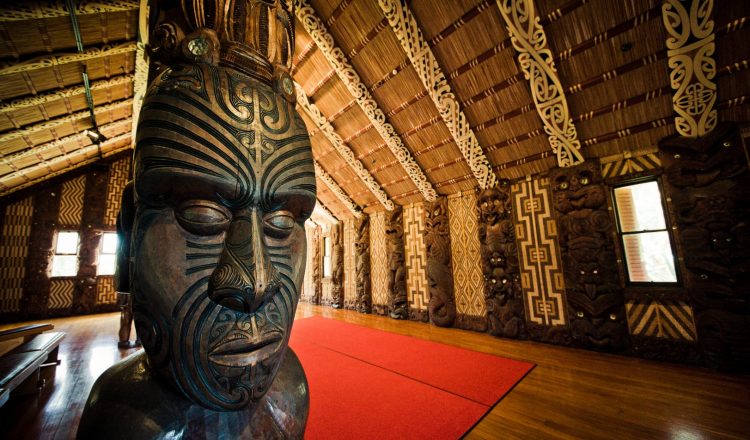마오리 음식
키위 요리는 세계 각국의 영향을 받아왔지만, 이 중 가장 오래된 요리 기술은 마오리족으로 부터 전수된 것입니다. 마오리족은 전통적으로 사냥꾼, 수렵인, 농부이자 어부였으며 어머니 지구가 자신들의 생명, 가족, 이위를 지키는 수단을 제공한다고 믿었습니다. 이러한 자연과의 연결은 마오리 요리의 필수적인 부분인데 음식을 땅에 묻는 전통 요리인 항이(Hangi)가 대표적입니다.
항이(Hangi)
마오리 문화에서 음식이란 환대와 나눔입니다. 음식은 마오리 문화의 필수적인 부분이며, 이들의 식문화는 사람들을 먹여 살리고 공동체를 하나로 만드는 것에 초점이 맞춰져 있습니다. 전통 요리 항이는 아마잎에 음식을 싸서 이를 단단하게 묶고 열을 가합니다. 그 다음 마치 서양의 오븐과 같이 뜨거운 돌로 가득 찬 땅구덩이 속에 넣어둡니다. 젖은 천으로 음식을 덮고 흙으로 덮습니다. 이렇게 하면 열이 빠져나가지 못하기 때문에 먹음직스런 음식을 만들 수 있습니다. 항이는 보통 3~4시간이 걸리지만, 오랜 시간이 걸리는만큼 부드러운 고기와 야채, 훈제향이 일품인 땅의 음식을 맛볼 수 있습니다.
카이(Kai)
마오리인들은 부족 영토에서 항이와 같은 카이(Kai, 음식) 재료를 구해왔습니다. 요리에 사용됐던 가장 흔한 재료은 물고기, 새, 고구마입니다. 그러나 서양 요리를 접한 후에는 돼지고기, 양고기, 호박, 양배추 등을 전통적인 방식으로 요리하기 시작했습니다. 쿠마라(Kumara, 고구마)는 마오리족이 거의 천년 동안 재배해온 식재료이며, 비록 그 기원이 뉴질랜드에 있지 않지만, 마오리족이 처음 왔을 때 태평양 섬으로부터 들여온 것입니다.
르웨나(Rewena) 빵은 오늘날까지도 마오리 사람들이 가장 좋아하는 빵입니다. 감자를 주재료로 한 빵인데 발효 과정에서 부풀어 오르며 일반 감자 대신 고구마를 사용하기도 합니다. 새콤달콤한 맛으로 유명하며, 항이와 함께 마오리 축제 때 자주 접할 수 있습니다.
마오리족은 주변에서 찾은 음식 재료들을 이용하는 동시에 맛을 더하기 위한 향신료로 다양한 허브, 호로피토(horopito)와 같은 약초도 사용합니다.
뉴질랜드를 구성하는 많은 문화 가운데서도 마오리 음식은 새로운 요리법과 퓨전요리으로 계속 발전하고 있습니다.

















































